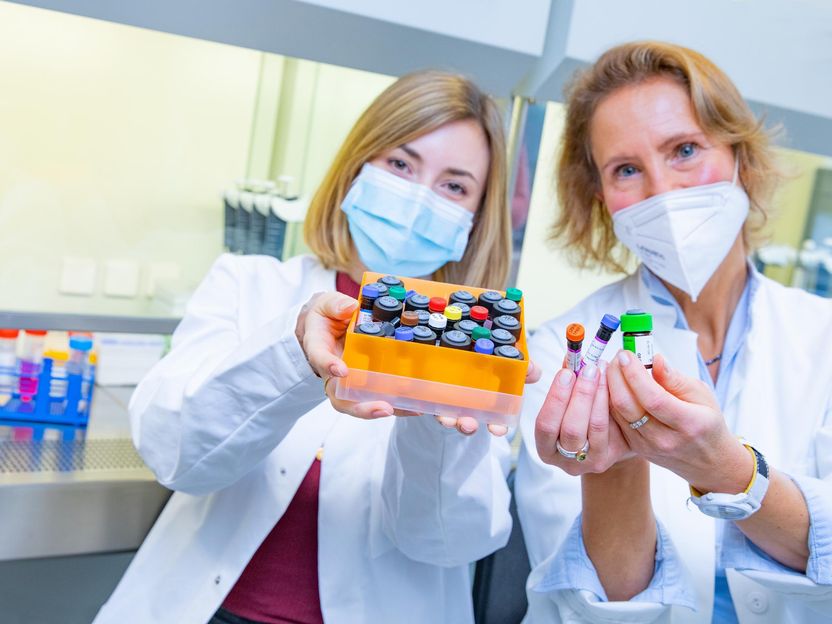Novartis Phase III study shows once-daily NVA237 is superior to placebo and similar to tiotropium in improving lung function in COPD
GLOW2 study shows NVA237 provides superior 24-hour bronchodilation to placebo (p<0.001) with comparable efficacy to open-label tiotropium at 12 weeks
Results from the pivotal Phase III GLOW2 clinical trial show that once-daily NVA237 (glycopyrronium bromide) 50 mcg significantly improved lung function in patients with moderate-to-severe chronic obstructive pulmonary disease (COPD) relative to placebo (p<0.001), with similar efficacy to open-label tiotropium.
Further efficacy and safety results from GLOW2 will be presented at a scientific congress in 2012, and the data will be used to support an application for regulatory approval to be filed before the end of 2011.
"NVA237 has demonstrated its potential benefit for COPD patients in two large pivotal Phase III studies," said Trevor Mundel, MD, Global Head of Development at Novartis Pharmaceuticals. "This new study adds to the growing evidence that NVA237 could be an important treatment option for COPD, and supports our plans to develop a fixed-dose combination with our long-acting beta2-agonist Onbrez® Breezhaler® (indacaterol)."
In an exploratory arm of the study, NVA237 was compared with open-label tiotropium (Spiriva® HandiHaler®) 18 mcg, another once-daily long-acting muscarinic antagonist (LAMA) indicated for the treatment of COPD. Results show that NVA237 produced similar improvements in lung function to tiotropium.
The study met its primary endpoint by demonstrating superior 24-hour bronchodilation to placebo at 12 weeks measured by trough FEV1 (i.e. forced expiratory volume in one second), a standard measure of lung function. NVA237 was delivered using the Concept1® device, a single-dose dry-powder inhaler.
Key secondary endpoints were improvement in breathlessness assessed using the Transition Dyspnea Index (TDI) at 26 weeks, and improved quality of life as measured by the St George's Respiratory Questionnaire (SGRQ) at 52 weeks. Important secondary endpoints were time to first COPD exacerbation and use of rescue medication during 52 weeks of treatment. The study met all of these endpoints.
The GLOW2 study also showed that NVA237 was well-tolerated with a similar incidence of adverse events for patients treated with NVA237, placebo and open-label tiotropium.
GLOW2 was a 52-week double-blind, placebo-controlled, parallel-group study involving 1,066 patients to assess the efficacy, safety and tolerability of NVA237 in patients with COPD. Patients were randomized into three treatment arms receiving either once-daily NVA237 50 mcg or placebo (double-blind), or once-daily tiotropium 18 mcg (open label). They were also permitted to use COPD background therapy and rescue medication.
In April 2011 Novartis announced results from the first Phase III clinical trial with NVA237. The pivotal double-blind 26-week GLOW1 study met its primary endpoint by demonstrating superior bronchodilation to placebo at 12 weeks measured by trough FEV1 (p<0.001). The incidence of adverse events was similar in NVA237-treated patients and in those receiving placebo. Further data from GLOW1 will be presented at the European Respiratory Society congress in Amsterdam in September 2011.
Organizations
Other news from the department research and development

Get the life science industry in your inbox
By submitting this form you agree that LUMITOS AG will send you the newsletter(s) selected above by email. Your data will not be passed on to third parties. Your data will be stored and processed in accordance with our data protection regulations. LUMITOS may contact you by email for the purpose of advertising or market and opinion surveys. You can revoke your consent at any time without giving reasons to LUMITOS AG, Ernst-Augustin-Str. 2, 12489 Berlin, Germany or by e-mail at revoke@lumitos.com with effect for the future. In addition, each email contains a link to unsubscribe from the corresponding newsletter.
More news from our other portals
Last viewed contents

Certain iron supplements may influence the development of colon cancer
Forbion Closes Oversubscribed Fourth Life Sciences VC Fund at EUR 360 million - Investment focus is on new drugs and technologies

The aging brain: protein mapping furnishes new insights - Researchers at LMU and the SyNergy Cluster of Excellence have analyzed how the proteome of specific brain cells changes as we age
Ibuprofen Decoy - Pain-reliever ibuprofen makes enzyme oxidize styrene with hydrogen peroxide

A taste for plastic - Discovered for the first time: New deep-sea enzyme breaks down PET plastic

A 'bio-refinery': using the chemistry of willow trees to treat municipal wastewater - Millions of litres of primary municipal wastewater can be treated sustainably using fast-growing willow trees while also producing renewable bioenergy and ‘green’ chemicals
Successful restart at Köttermann

Only alcohol -- not caffeine, diet or lack of sleep -- might trigger heart rhythm condition - Lifestyle factors may play role in managing the malady, latest study shows

How a SARS-CoV-2 infection can become severe COVID-19 - Severity is linked to disruption of the endothelial barrier and can be measured by looking at inflammatory and endothelial plasma proteins

Proteins roll the dice to determine bee sex - “We have been able to solve a genetic mystery that has existed for more than 100 years"























































